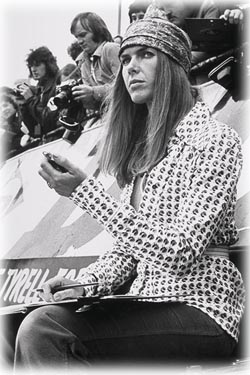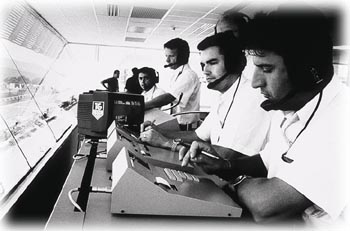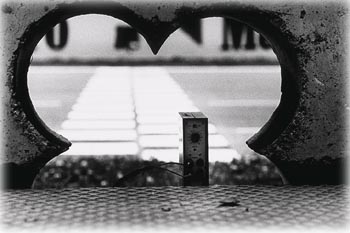|
The secret of great comedy is in the timing. But comedy is not alone. When success or failure in Formula One can be measured in 1000ths of a second, the organisation that runs the race timing has got its work cut out.
 It wasn't too many years ago that a Formula One race was timed with a hand-held stopwatch and any two cars sharing the same tenth of a second were considered to have set the same time in qualifying for the grid. It wasn't too many years ago that a Formula One race was timed with a hand-held stopwatch and any two cars sharing the same tenth of a second were considered to have set the same time in qualifying for the grid.
Today, thanks to telemetry and sophisticated individual sensors on each car, the all important positions of a Grand Prix car on the grid or even during the race can be - and often are - accurately measured in thousands of a second, or to .001 of a second.
To many Formula One aficionados, the fact that Ferrari's Michael Schumacher lost the vital pole position to archrival Jacques Villeneuve at the 1997 European Grand Prix was not a great moment in sports history. What brought that particular moment in time into the ranks of the X-Files and the paranormal, was the fact that he did so with an identical time to within 001. of a second, several minutes after Villeneuve had crossed the finish line.
If that was the mathematically improbable, what followed was the mathematically impossible, and it had veteran F1 reporters looking up the telephone numbers for Special Agents Mulder and Scully in their contact books. With Villeneuve and Schumacher sitting dead even on the clock, along came the Canadian's Williams Renault team-mate, Heinz-Harald Frentzen, with exactly the same time. To .001 of a second. The odds of that happening, as punters like to say, are astronomical, but happen it did.
Since 1992, the company responsible has been TAG Heuer. A week before every grand prix, the 20-strong TAG Heuer timing team sets up the screens and radio antennae that will allow them to time every second of the weekend's action, both in "untimed" practice and qualifying as well as the race proper.
 It's a daunting task. Each racing team has at least three screens displaying timing information. All the information, of course, also has to be relayed to the press room and the electronic information boards around the spectator stands. Typically, this involves several miles of wiring and sophisticated electronics. Simply keeping the system working over 72 hours is an engineer's nightmare.
It's a daunting task. Each racing team has at least three screens displaying timing information. All the information, of course, also has to be relayed to the press room and the electronic information boards around the spectator stands. Typically, this involves several miles of wiring and sophisticated electronics. Simply keeping the system working over 72 hours is an engineer's nightmare.
It takes 16 on-site technicians to install and operate the 10 tons of various equipment, as well as the 130 individual TV monitors that have to be transported to each Grand Prix in at least 100 different containers.
To ensure there are no bugs in the timing system, TAG-Heuer actually uses three separate methods to time an F1 racecar. Needless to say, each can be cross-checked.
"The system largely relies on an electronic transponder fitted to each racing car," explains St Aphane Kiener, sales manager at TAG Heuer's headquarters in Geneva. "About the size of a matchbox, it transmits information on each car's speed and lap times on a unique frequency. At the finish line and the two waypoints between sections of the track, it transmits to a central computer, which then collates all the data and displays it on screen." For back up, there are infra-red photo-cells on the start line that identify and register each car, permitting control-centre staff to maintain essential timing information even if the transponder system breaks down. And, as a last resort, there are timer-linked video cameras on the start line to provide the same resource.
 "There are also sensors in the pits that detect when cars arrive, and how long they stop in the pit lane for refuelling and new tyres," says Kiener. "It's the same system that's used on the start line to detect any car that starts before all the red lights go out, ensuring nobody can get away with a jump start." The range and detail of the data available is extraordinary. All times are measured to an astonishing standard of accuracy: displays routinely show 1000ths of a second, though the system actually measures 10,000ths for extra accuracy. "There are also sensors in the pits that detect when cars arrive, and how long they stop in the pit lane for refuelling and new tyres," says Kiener. "It's the same system that's used on the start line to detect any car that starts before all the red lights go out, ensuring nobody can get away with a jump start." The range and detail of the data available is extraordinary. All times are measured to an astonishing standard of accuracy: displays routinely show 1000ths of a second, though the system actually measures 10,000ths for extra accuracy.
Stories of time and relativity are fascinating, but time means nothing if you can't relate it to distance in the mind's eye. Tell racing fans that a difference of .001 seconds represents a few centimetres of tarmac after an entire flat-out qualifying lap, and they will be even more impressed.
TAG-Heuer have worked out a simple formula to calculate the winning distance in metres and centimetres from the difference in time and speed of the cars.
| The formula is: |
D = |
|
| S x T |
 |
| 36 |
D= Distance in centimetres
S= Speed of the car in kilometres per hour (Kph)
T= The time gap between two cars in thousandths (.000) of a second
For example, when veteran Gerhard Berger lost the pole by just .008 of a second for Ferrari against Schumacher's Benetton at Imola in 1995, the distance separating the two was:
| D = |
| 257.4 kph * 8 |
 |
| 36 |
D = 57.2 cms
Those memorable final qualifying times at Jerez 1997, when Villeneuve, Schumacher and Frentzen all set 1:21.072 seconds, could have been shown, as Frentzen quipped at the time, to the fourth decimal place. The magic component that makes all this possible is TAG's unique electronic timer. It sits in the control room and crunches numbers. "It's a small black box linked to the computer, measuring about 15cm by 15cm," says Kiener. Okay, it's small, but it must be powerful, right? An expensive piece of kit, no doubt. "Er, not really," says Kiener. "About 3000 Swiss francs." So there you have it: £1200 to stage your own GP timing system. Just a shame you've got to find a few million more for the aerials, transponders, cameras, screens, software.
| 
